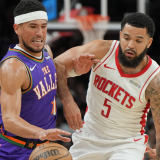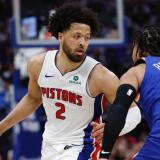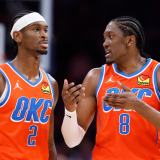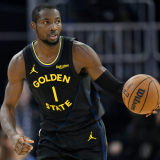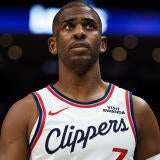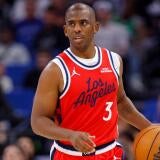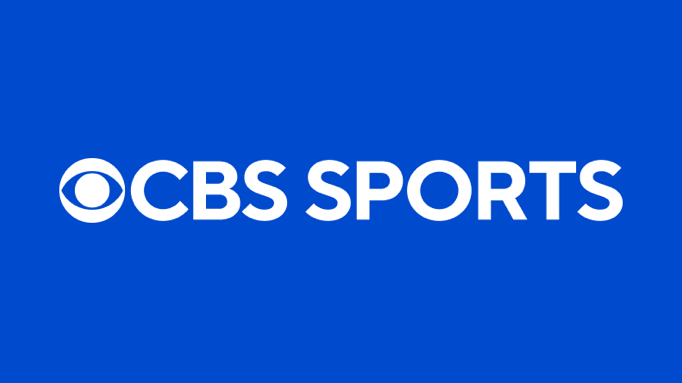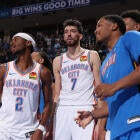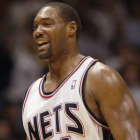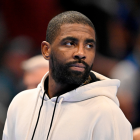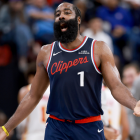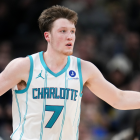Why Aaron Nesmith's bargain contract was two years in the making, and what it tells us about NBA team building
Bargain contracts tend to lead to bargain extensions
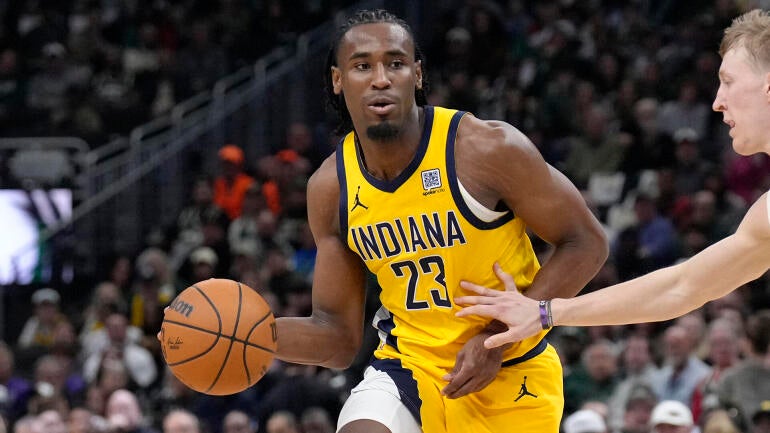
What's the going rate for an elite 3-and-D wing? It depends on our definition, I suppose. Dillon Brooks and Kentavious Caldwell-Pope both got around $22 million per year to change teams as free agents, so that would seem like a useful benchmark for veterans on the move. When it's a younger, internal option with theoretical upside in other areas, that figure goes up. Jaden McDaniels got $26.2 million before the "3" end of the equation ever materialized. Really, the best versions of this archetype just don't become available very often. The Knicks gave OG Anunoby $42.5 million per year just to keep him out of free agency. These players are scarce and critical. They are one of the few things any successful team virtually has to have.'
So how did the Pacers just secure one at a contract far below any of the ones we've covered thus far? Aaron Nesmith has made 42.3% of his 3s over the last two seasons on meaningful volume. He's evolved into arguably their best defensive player, and certainly the one they feel most confident throwing at opposing stars. On Monday, he agreed to a two-year, $40.4 million extension with the Pacers that's actually much more of a bargain than it seems on the surface.
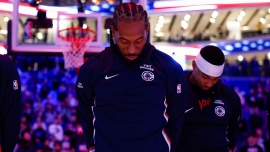
Remember, we're in a rising cap environment, and Nesmith's new extension doesn't even kick in until the 2027-28 season. The $20.2 million average on that deal would represent around 13.1% of the salary cap. Say the cap rises another 7% over the next two summers as it just did, though. By the 2027-28 season, that figure would only represent around 11.5% of the cap. Anunoby is set to make 25.6% of the cap this season for comparison. Was he really more than twice as valuable when the Knicks and Pacers met in the Eastern Conference Finals?
Of course not, but the circumstances surrounding their acquisition were very different. The Knicks traded for Anunoby on an expiring contract, and they did so in an environment in which at least one team, the 76ers, was positioned to offer him the max if he'd reached free agency. In essence, he had them over a barrel and he took advantage of it. The Knicks certainly don't regret the Anunoby contract. He's a great player, the pinnacle of this archetype in the modern NBA. But the contract absolutely isn't a bargain.
Now compare that to Nesmith, who will make significantly less than players like McDaniels, Brooks and Caldwell-Pope as a percentage of the cap. He's younger and better than Brooks and Caldwell-Pope, and his shooting is meaningfully better than McDaniels' at least. But he was extremely limited in what he could legally sign for thanks to the NBA's extension rules.
A standard veteran extension is capped at one of two figures as a starting point: either 140% of the salary he is set to earn in the last year of the existing deal, or 140% of the estimated average player salary, whichever is greater. Nesmith is currently playing out a three-year, $33 million rookie extension he signed two years ago. When he signed that contract, he wasn't even a full-time starter yet. The Pacers believed enough in what they saw out of him to lock him up for multiple years. They were obviously rewarded for that with significant improvement.
And yet, the rewards weren't limited to that contract alone. Because it was so obscenely cheap, Nesmith was limited to 140% of the average player salary on a possible extension. If he'd wanted to ensure more long-term financial security, he had to take less than he was worth. In order to reach free agency and receive the more lucrative deals his peers had gotten, he would have needed to wait two years. That means two years of hoping to stay healthy and two years of hoping he can maintain his current level of play, one of which will come without Tyrese Haliburton. That wasn't a risk he was willing to take, so he re-signed, and now the Pacers have Nesmith locked into another team-friendly deal.
Essentially, what this means is that in the modern NBA, team-friendly contracts beget team-friendly extensions. A very similar story just played out in New Orleans. Herb Jones was a second-round pick in 2021. He vastly outplayed that draft position, so the Pelicans declined his team option for the 2023-24 season to make him a restricted free agent. However, as he had only been in the league for two years at the time, they only had Early Bird Rights rather than full Bird Rights on him as a free agent. This limited him to a four-year, $54 million pact. He was worth more. He couldn't get more because he was restricted, so he took that deal. Then, this offseason, he extended it for the maximum $68 million over three years. Once again, he got less than he was worth because the rules restricted it. He wanted security, so he took what he could get.
There are versions of this playing out all across the NBA. Derrick White's four-year, $118 million extension with Boston from the summer of 2024? That was based on the maximum allowable raise off of his four-year, $73 million rookie extension in San Antonio. The most prominent example, though, came in New York. The Knicks not only signed Jalen Brunson to a below-market contract in 2022, but they did so at a descending annual salary. This meant that he was extending off of the lowest figure on his original contract, which in turn meant that his extension could pay him literally nine figures less than he would have gotten had he waited an extra year and become a free agent.
Every individual player's reasons for taking these below-market deals are different. For Brunson, it was about team-building. For others, it's about securing life-changing money. After all, just because a contract is small by NBA standards doesn't mean it's small in the real world. But the message here, essentially, is that it has never been more valuable to have valuable contracts, because one valuable contract very often now leads to another one.
Stacking value contracts is easier said than done, though. The Pacers tend to do it by extending their players as early as possible. They just did this with Andrew Nembhard last offseason, securing him to a three-year, $59 million deal. There's no telling what he'll be worth when he eventually becomes extension-eligible, but there's a good chance it's more than what he gets. This isn't a foolproof strategy, though. Another team that tends to do this? Denver. Think of how crippling the Zeke Nnaji contract turned out to be for them. They signed him to a four-year, $32 million pact before even really seeing him become a rotation player. Now, that's almost dead money on their books. There's risk and reward here. The Pacers were proactive with players that ultimately proved worth it. When they don't, well, the contract can just as easily go south.
But when we're talking about smaller numbers, it's usually easier to get off of a bad contract than it is to find a good one. Whether it means attaching picks in a dump, including the contract in a bigger trade, or waiving and stretching if necessary, it's usually not that hard to get off of a bad contract if the number is low enough. The risk-reward calculus for early extensions now seems to be tipping more in the direction of rewards. Frankly, most teams would eagerly take on the Nnaji contract if it came with Nesmith's. The Pacers have managed to parlay one team-friendly deal into another, and that's a strategy more and more teams are trying to emulate in this crushing apron environment.


